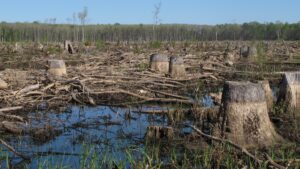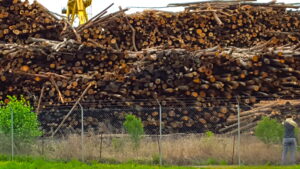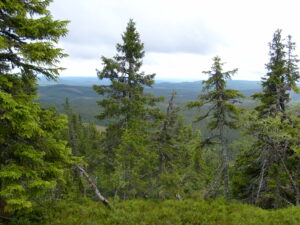An atlas of environmental justice conflicts
By Nick Meynen, Project Officer, Global Policies and Sustainability Unit, European Environmental Bureau (EEB)
Far from most eyes and ears, environmental collisions between industry and local communities are occurring around the world. The Atlas of Environmental Justice, created by a global coalition of academics and activists, shows the where, why and what has been happening. We’re not only destroying entire ecosystems, we’re also creating social conflicts along the way. As the natural resources we rely on run out, the commodity frontier has been shifting from easy places to areas where conflicts arise.
Out of the 1665 environmental conflicts documented and mapped in the atlas so far, 279 are related to biomass and land use (including forestry, agriculture and livestock management). If you go to the atlas and select agro-fuels and biomass energy plants, you’ll find details concerning 47 different conflicts related to bioenergy. One is the Dakatcha Woodland biofuel project in Kenya. Dakatcha is a large area of relatively intact coastal woodland, between 25 and 50 km from the coast. Home to some rare and globally threatened species of birds (like the endangered Clarke’s weaver in above photo), plants and mammals, it’s a biodiversity hotspot and one of Kenya’s 60 Important Bird Areas. It’s also home to over 20,000 local people, the majority engaged in small-scale farming.
Generated map showing 279 documented conflicts related to biomass and land use (including forestry, agriculture and livestock management)
Kenya Jatropha Energy Ltd., a subsidiary of Italian owned Nuove Iniziative Industriali Srl, was planning a jatropha plantation in the Dakatcha Woodlands to produce biodiesel. The majority of the fuel was intended for European markets. Before the Environmental Impact Assessment (EIA) was even made public, the company had begun clearing the land. The local Watha community and environmental groups fought back by chasing the plant operators away from the site and filing a court case to stop the clearing. Because of the community protests and international attention, also supported by partners of BirdLife International, the Kenyan National Environment Management Authority announced that the project would not be allowed, and so the Dakatcha Woodlands were saved.
This is just one of the agro-fuel and biomass energy conflicts that have been documented in the atlas, and sadly, only one of the rare cases where a community has won. But the atlas, also part of the EJOLT Project, is just the tip of the iceberg. Despite efforts to make wood supply chains more sustainable, rising demand for all different kinds of wood products in high consuming regions like the EU have caused an expansion from 15 to 60 million hectares of industrial tree plantations in just 20 years.
Bart Muys, professor Forest Ecology and Management at the Catholic University of Leuven says: ‘We can’t rely on forests in the EU, so the only other option is land theft outside the EU. I’m stupefied that the EU funds this.’ Professor Joris Van Acker from the Lab for Wood Technology (UGent) says: ‘a study from the International Energy Agency (IEA) has shown years ago that biomass can never solve our energy problem’.
One persistent myth about the expansion of industrial tree plantations and lands for biofuels is that they happen on ‘virgin’ land. In the Dakatcha woodland this translates to the displacement of 10000 people. This only adds to the rising expulsions at global level. We’re looking at 15 million people being displaced annually for ‘development’ projects like dams, mines and industrial biofuel projects.
Europe is bringing in more and more bioenergy from abroad. The economic cost for this is visible in the Atlas of Environmental Justice. So it is not surprising that in the Global South, organisations like the World Rainforest Movement have called on the EU to exclude large scale bioenergy from the definition of renewable energy and the Renewable Energy Directive. Biofuelwatch, Corporate Europe Observatory, EcoNexus, the Global Forest Coalition, NOAH-Friends of the Earth Denmark, Rainforest Rescue/Rettet den Regenwald Rescues, the Transnational Institute and World Rainforest Movement are the first signatories, but the call to sign the petition is still open.
On the other hand, the EEB, BirdLife Europe and eight other European civil society organisations have stated that sustainable forms of bioenergy can make a contribution to mitigating climate change as part of the future renewable energy mix and should be actively promoted under a post 2020 EU renewable policy. However, they also say that it’s important to recognise and respect the physical limitations on how much bioenergy can be produced sustainably.
Photo: Clarke’s Weaver females & immatures feeding on small fruits (c) Steve Garvie





